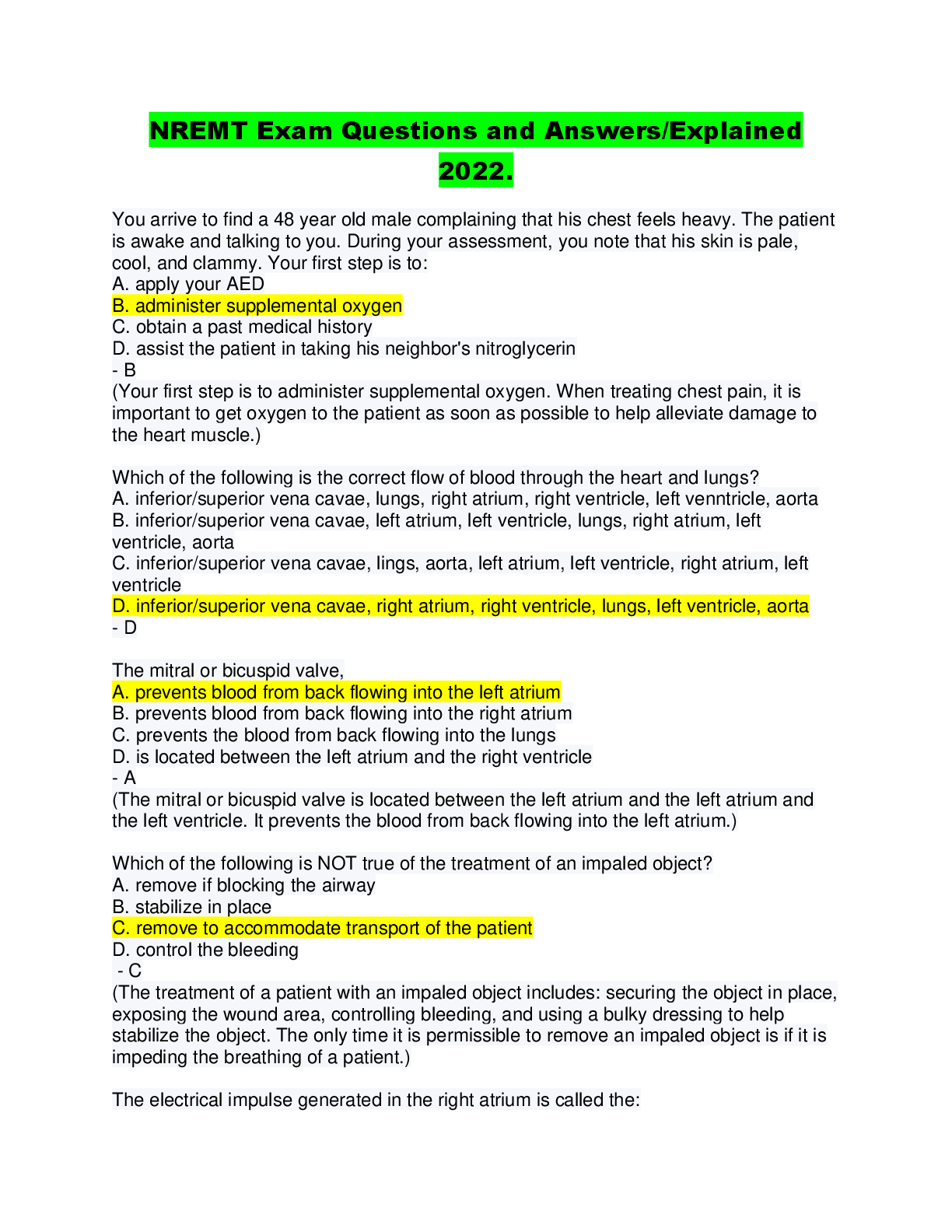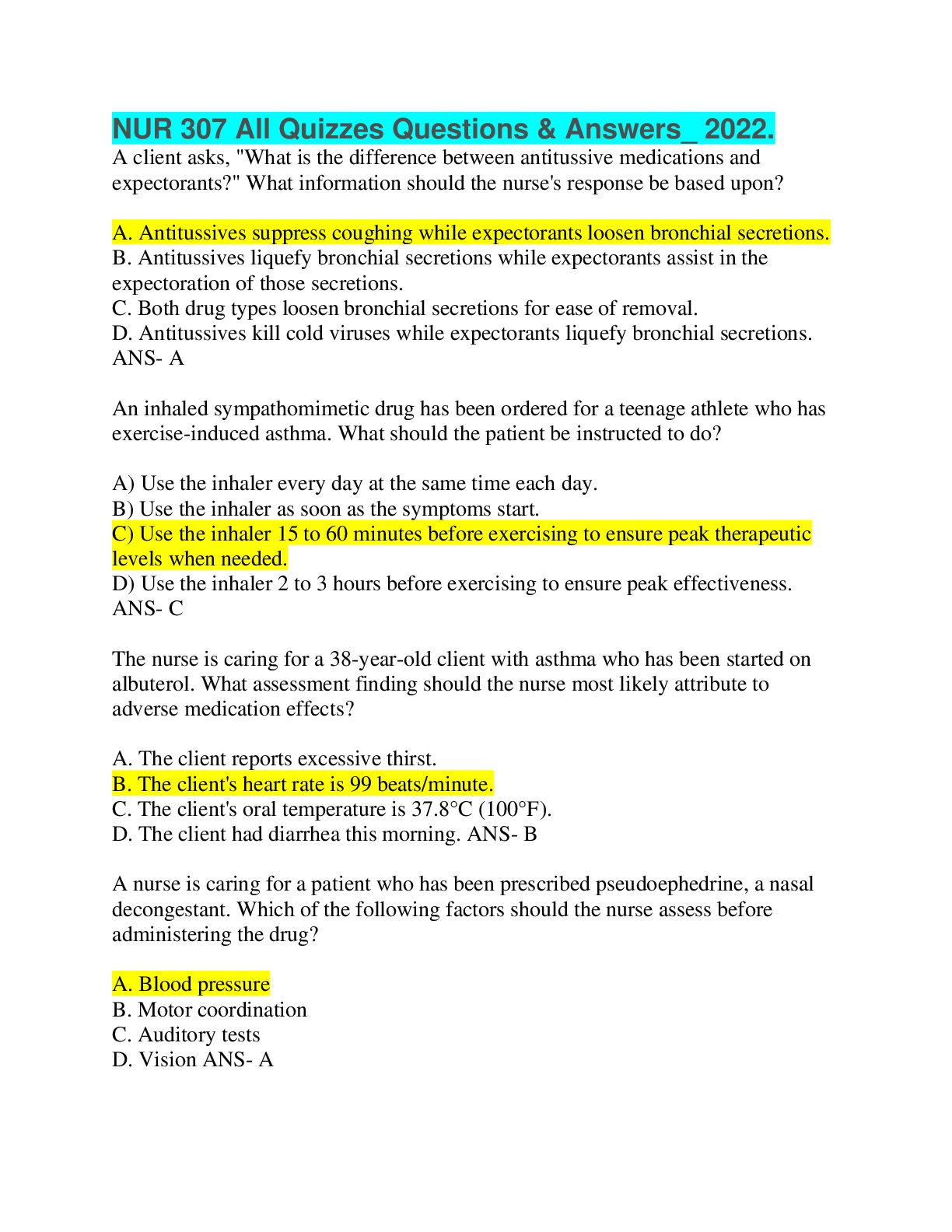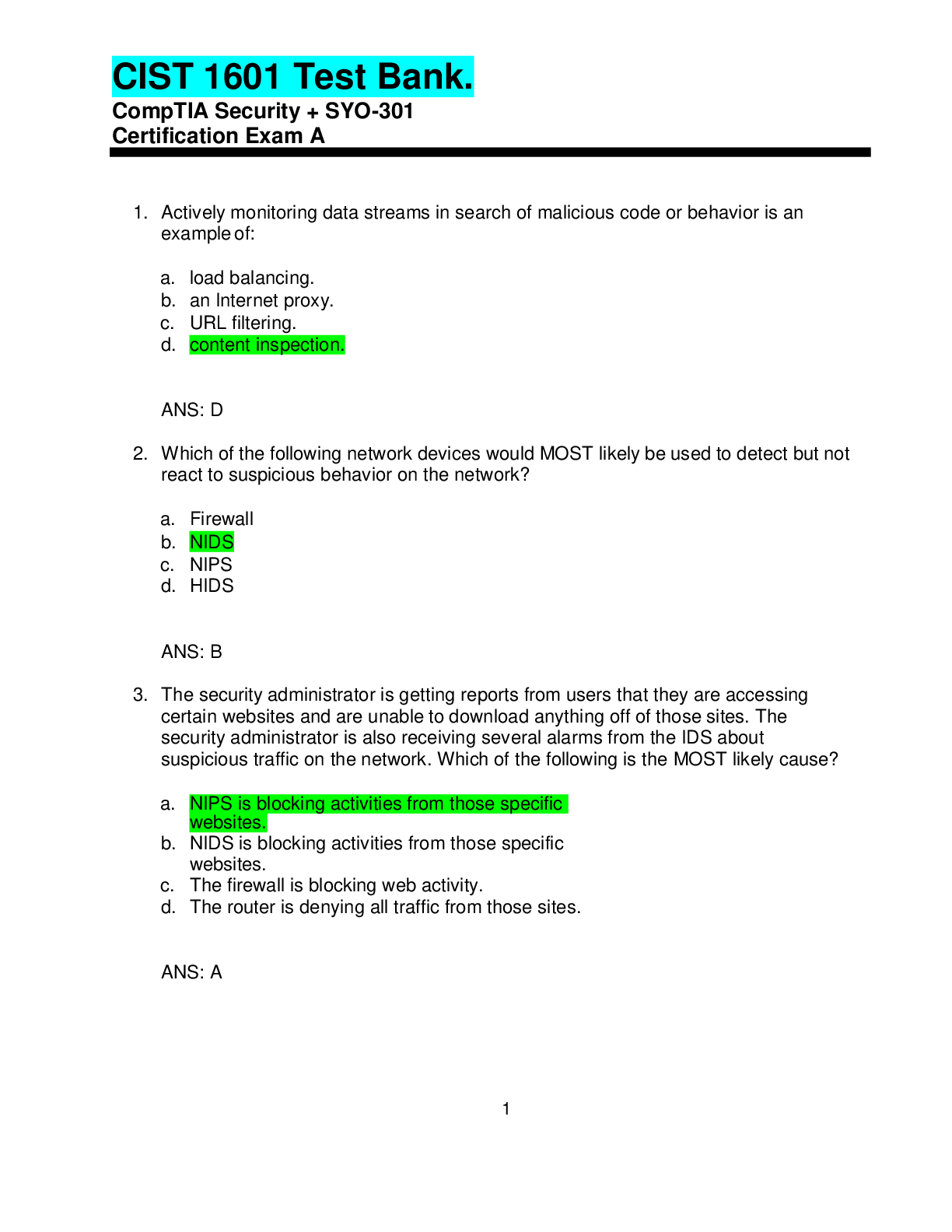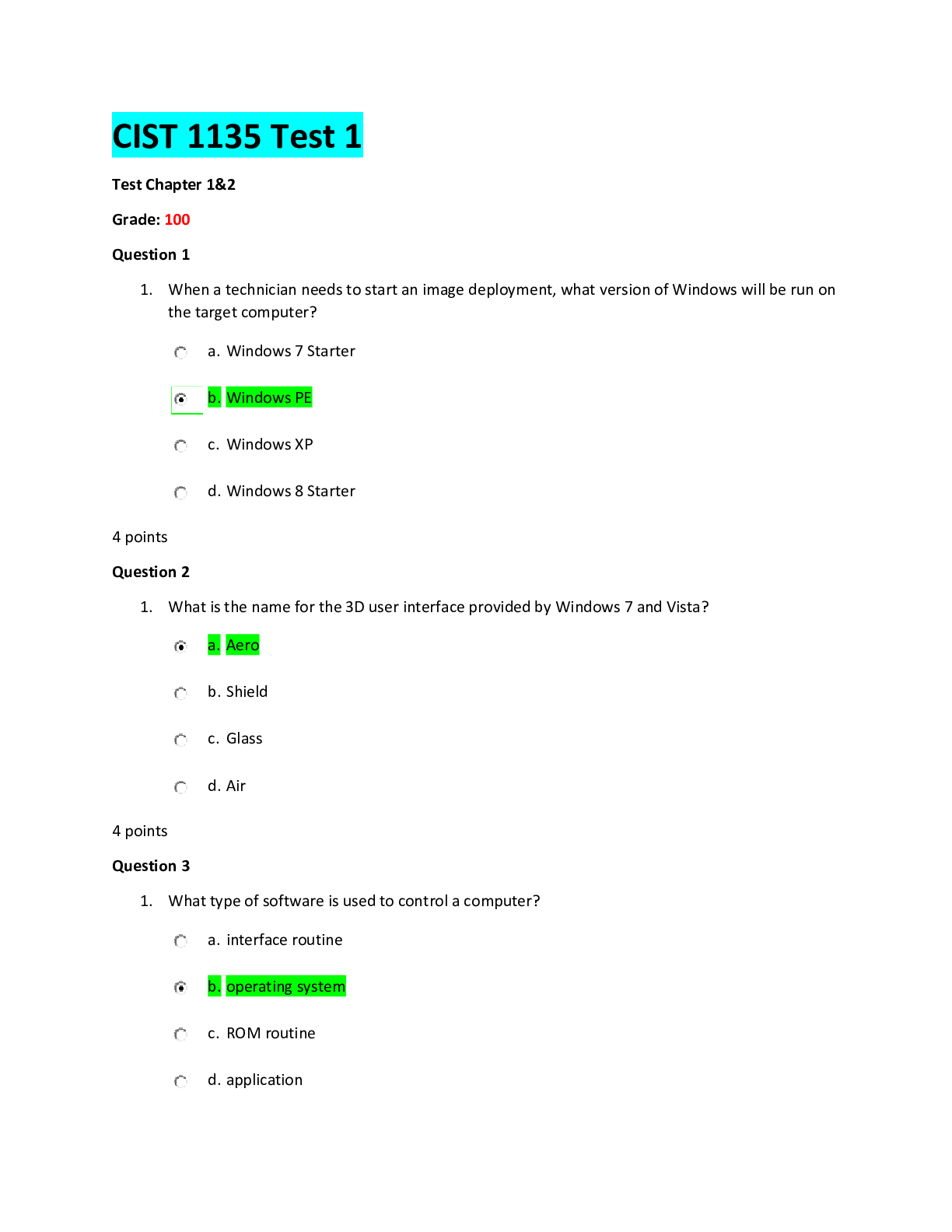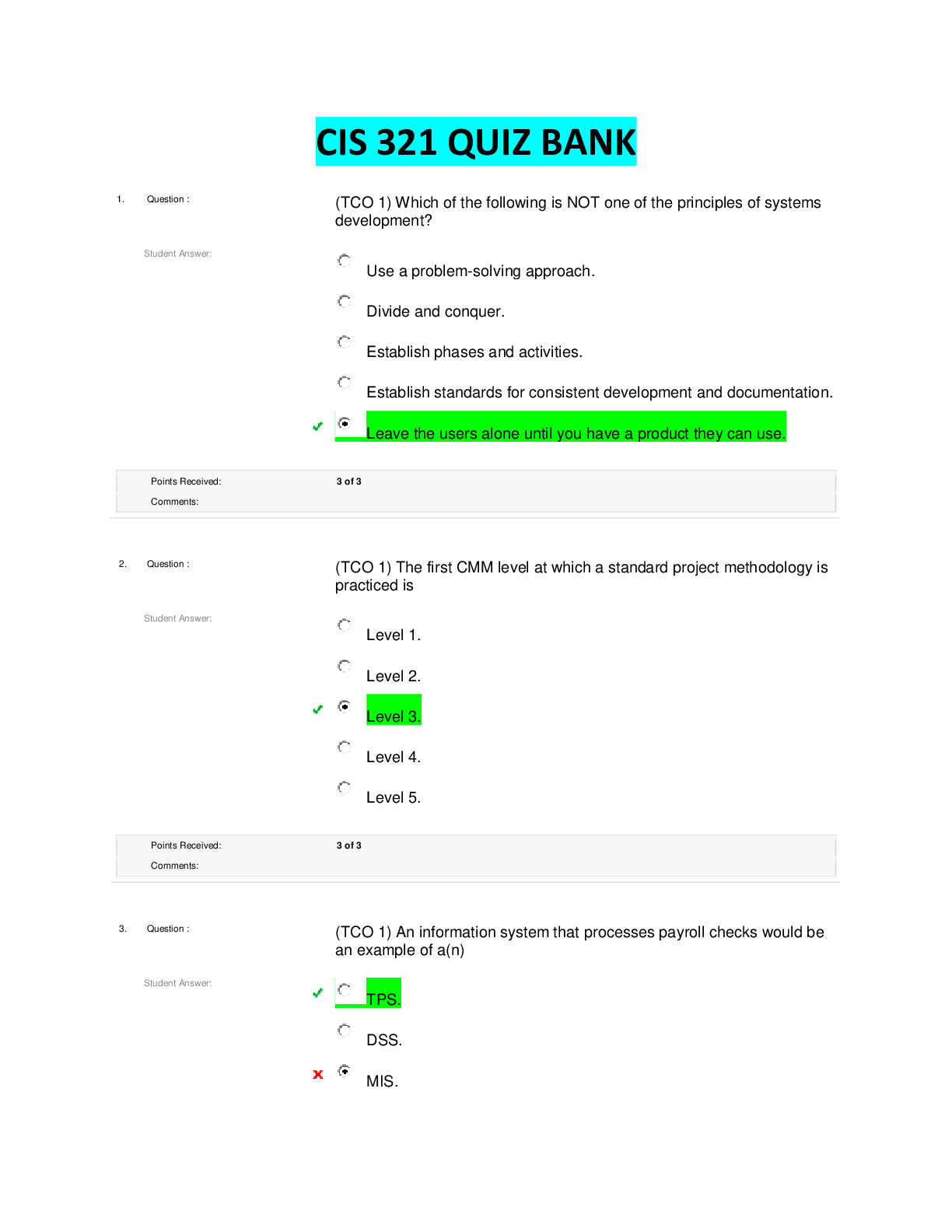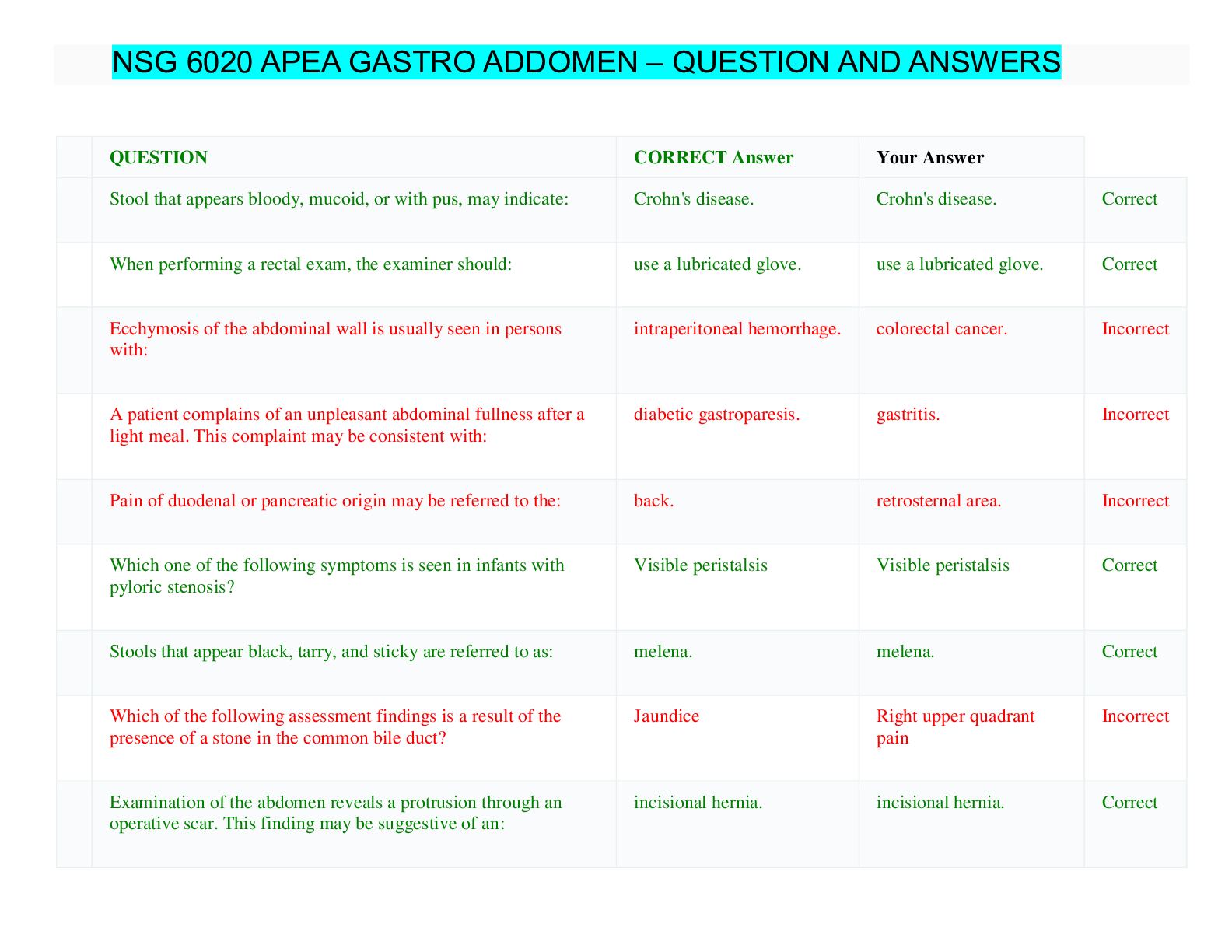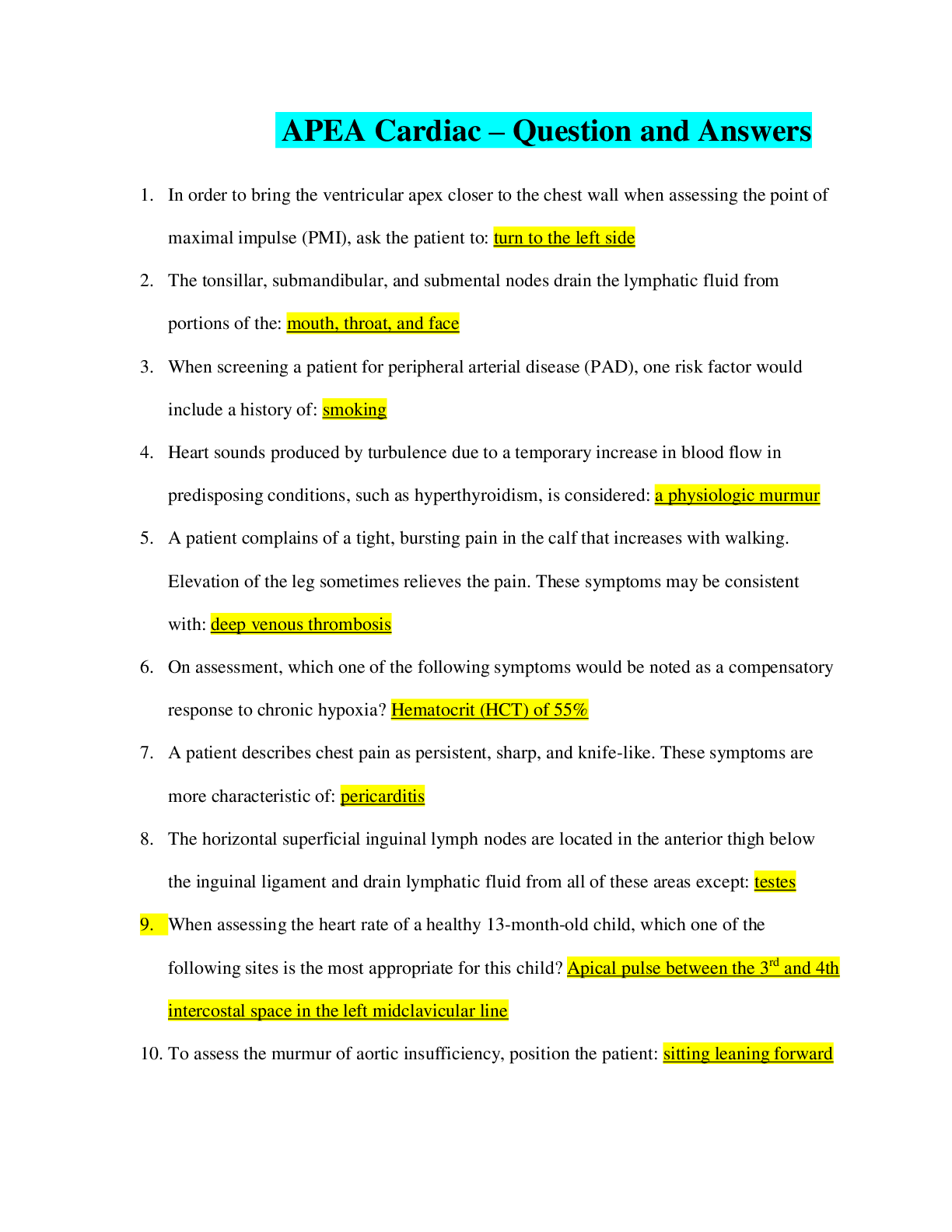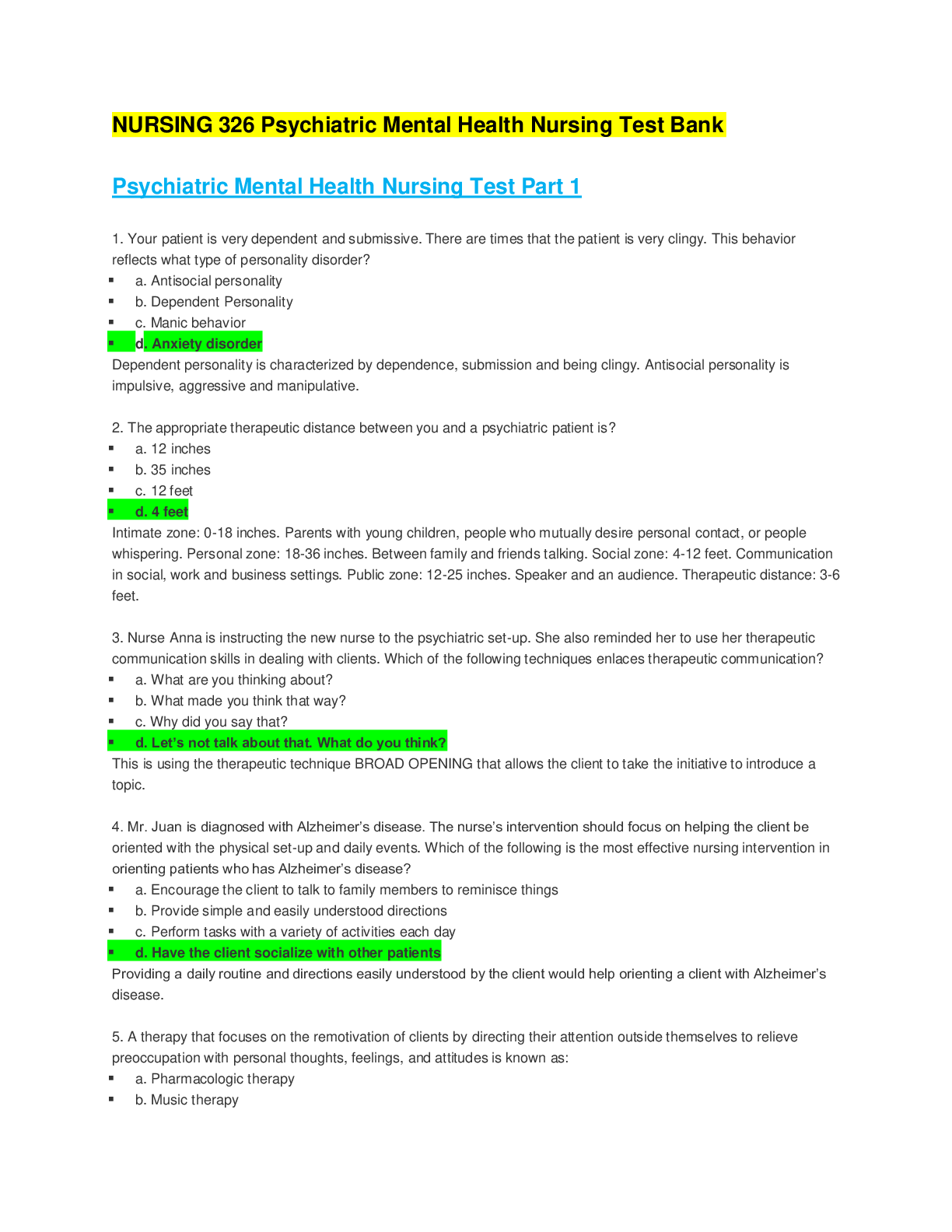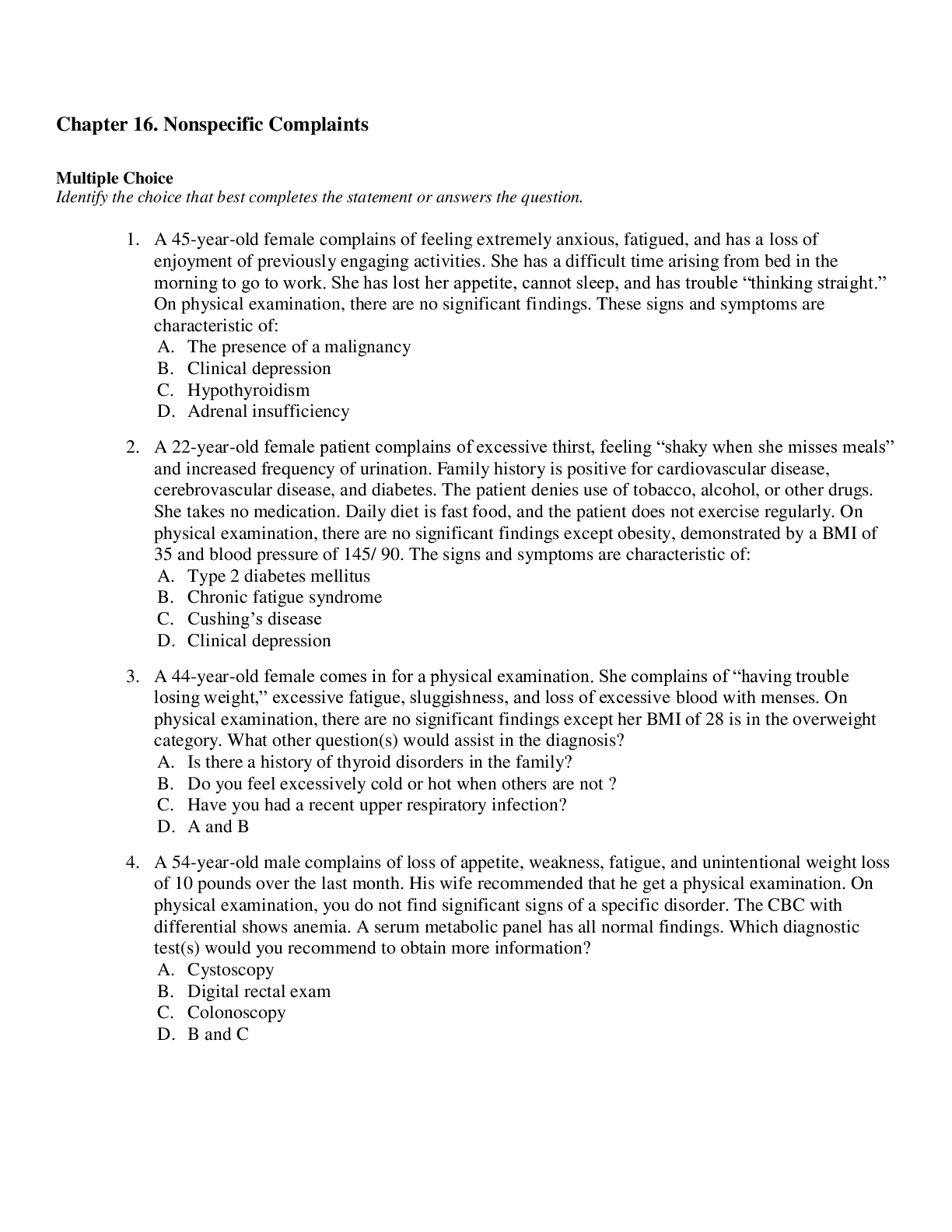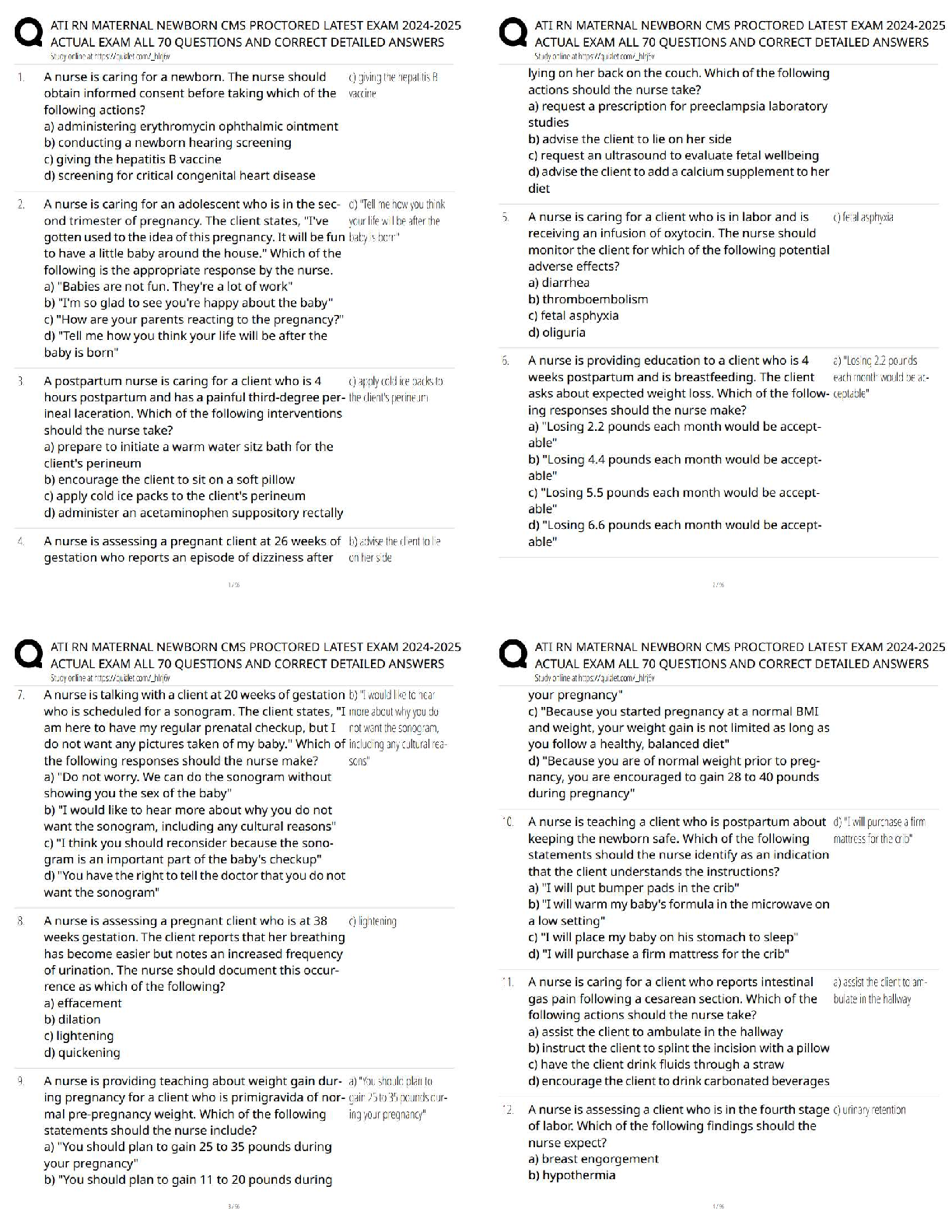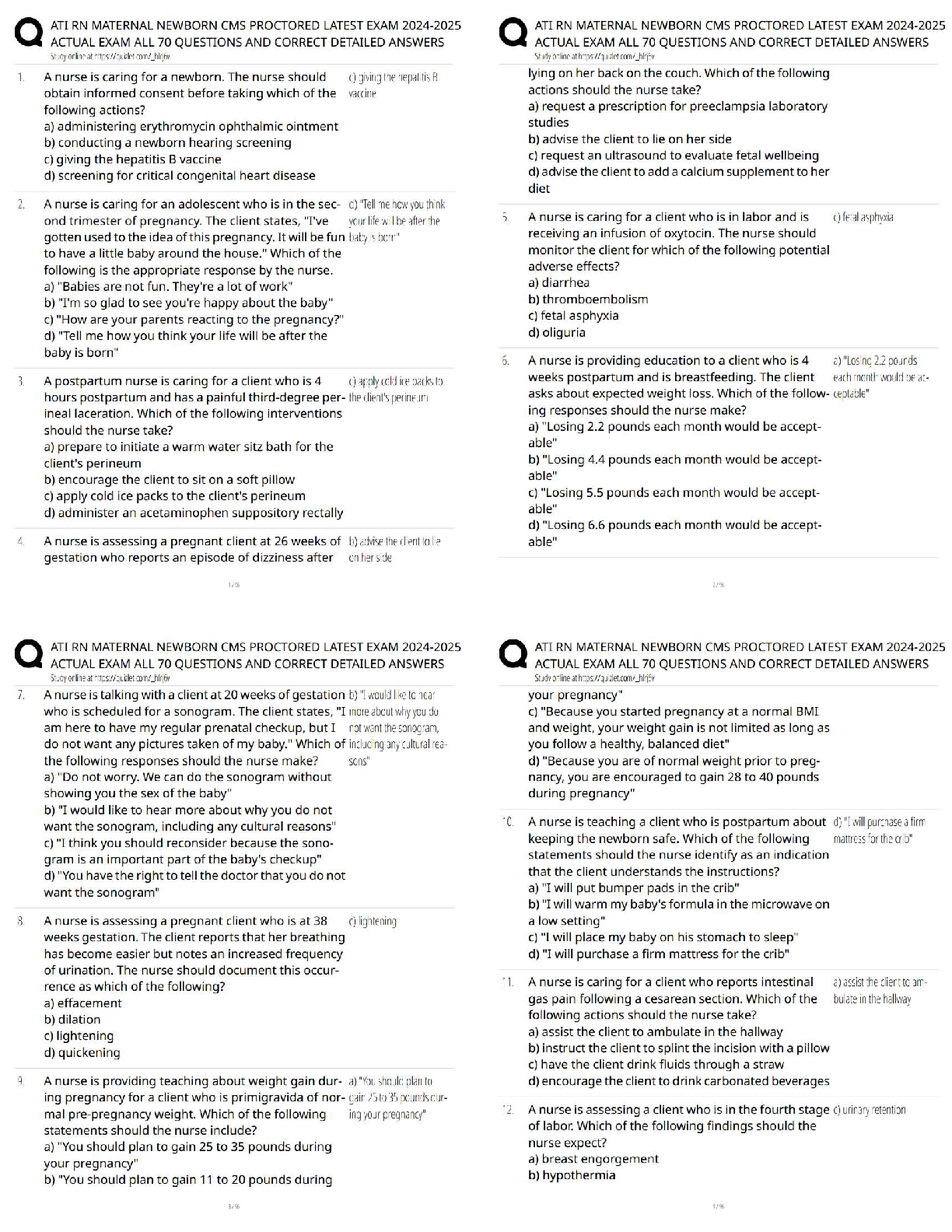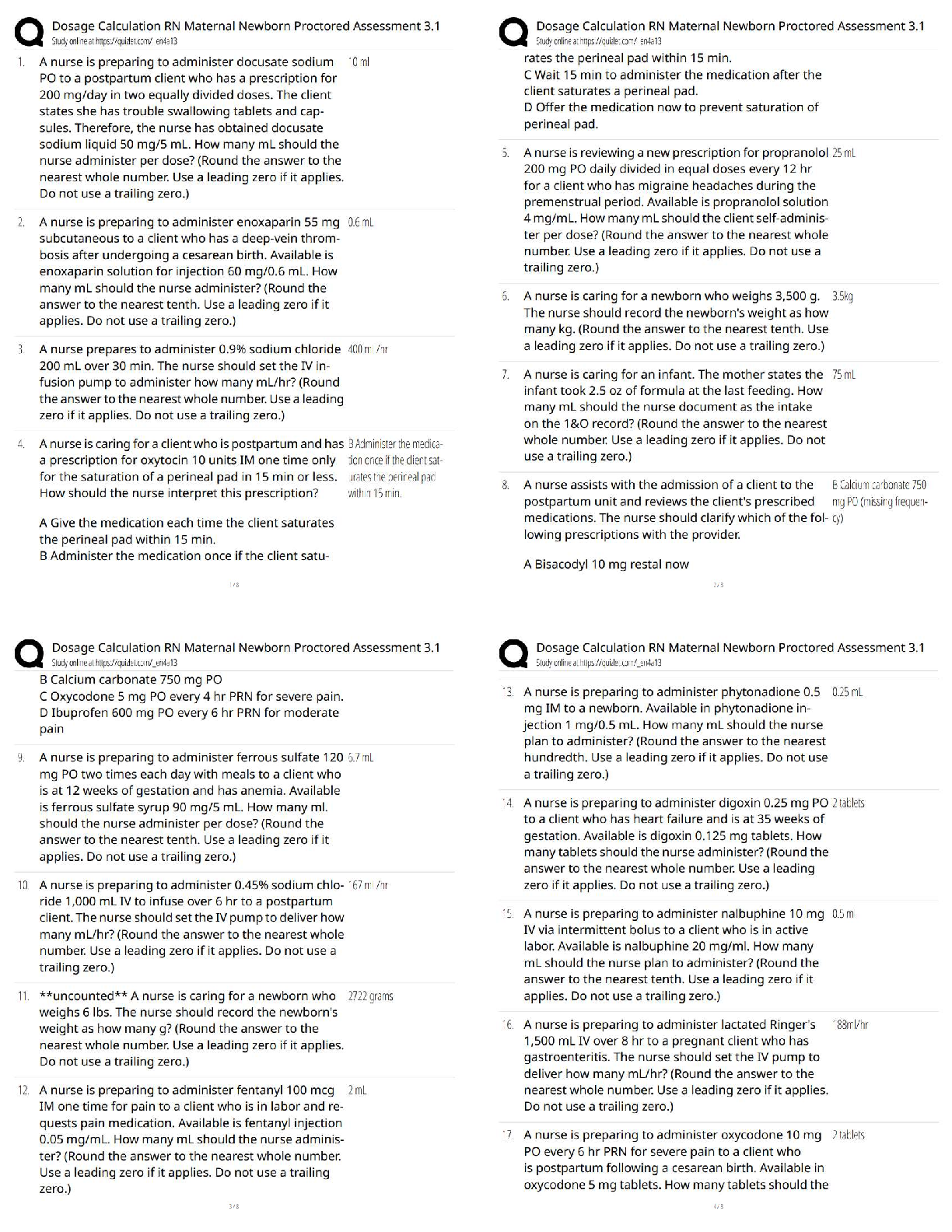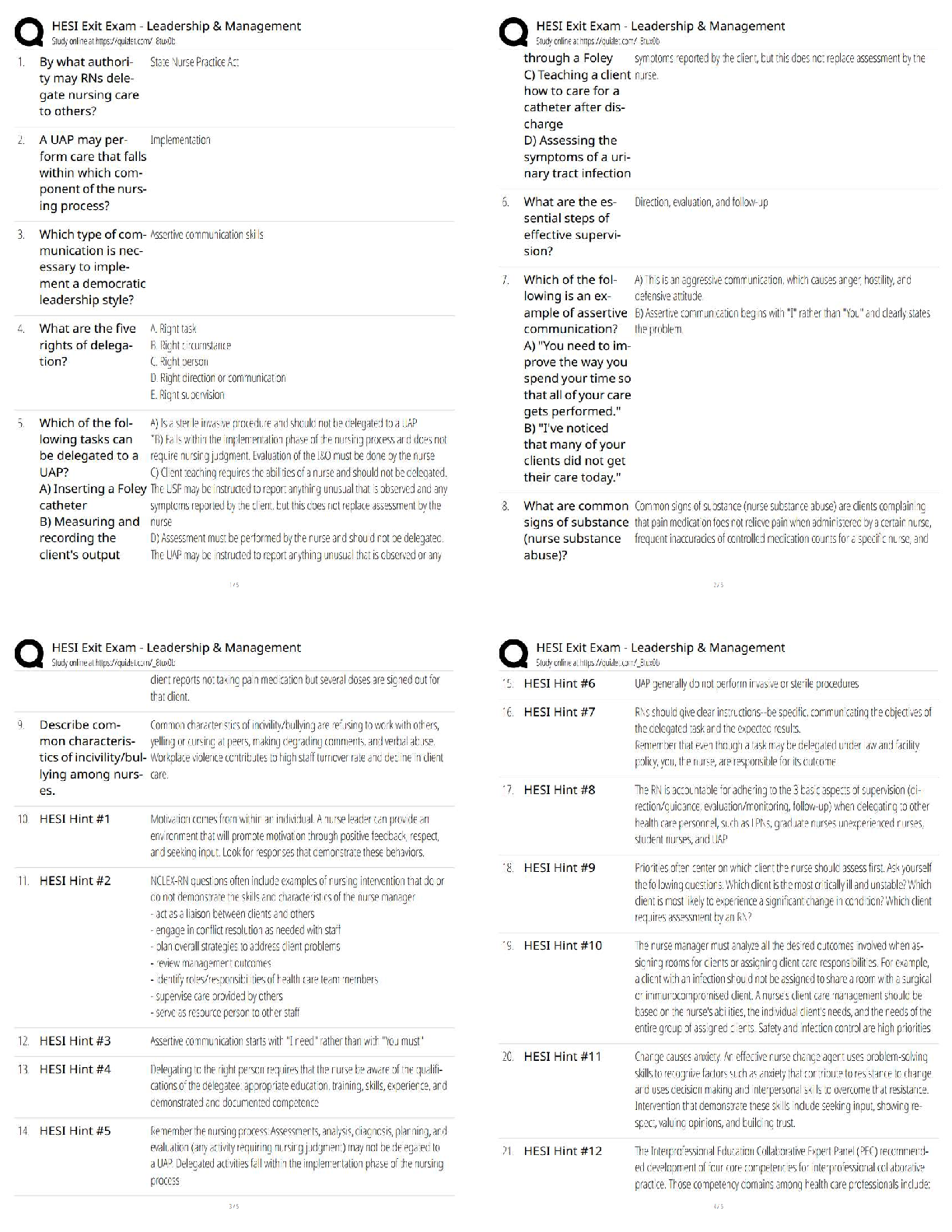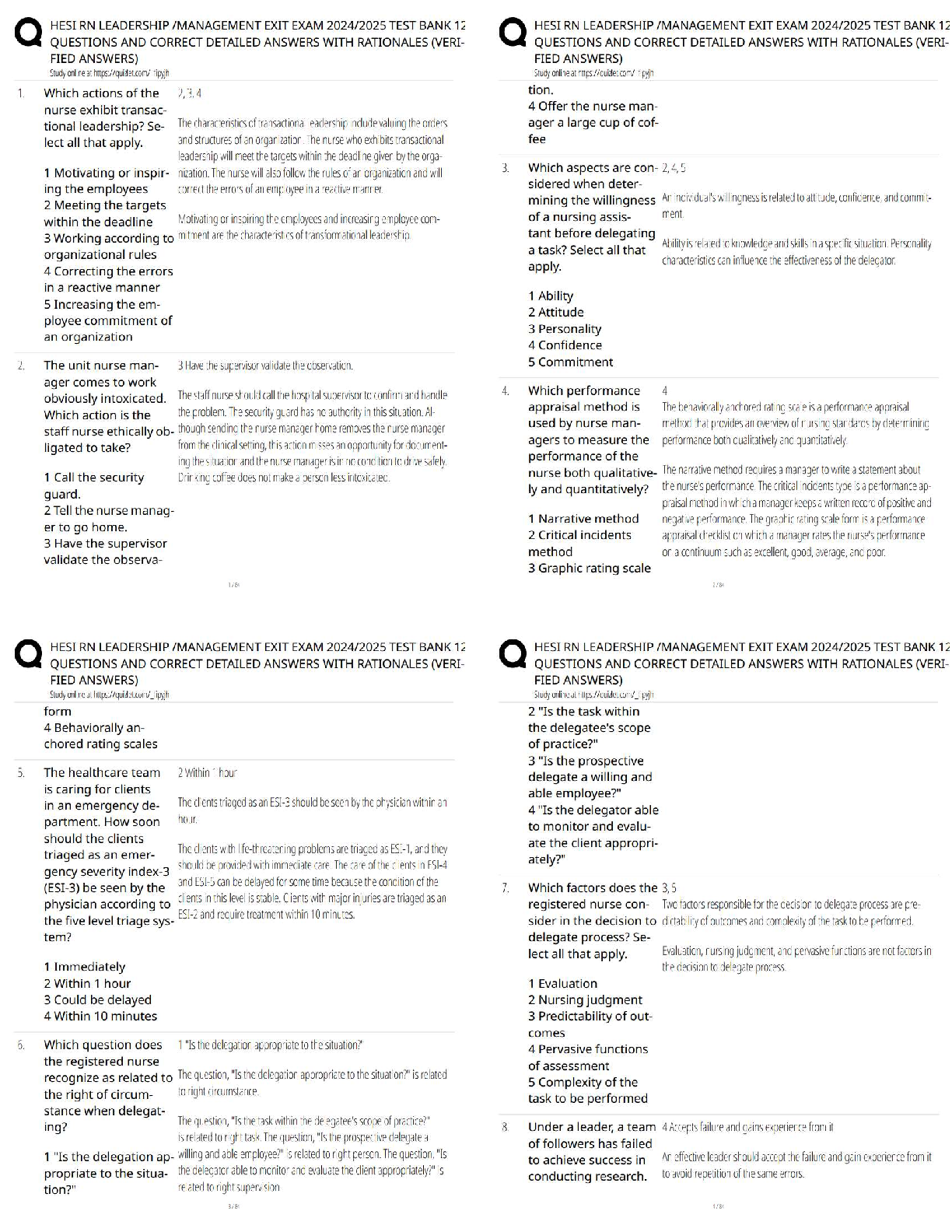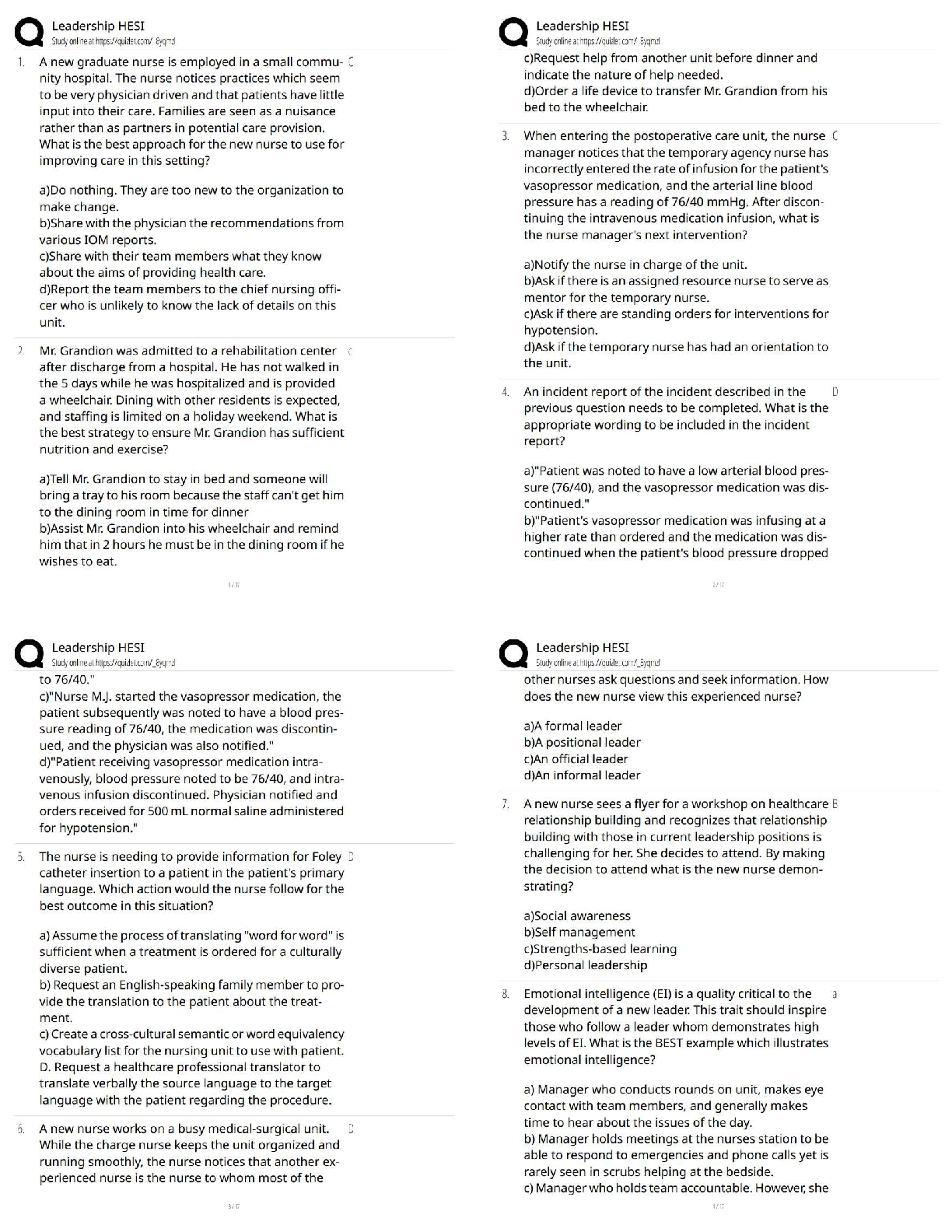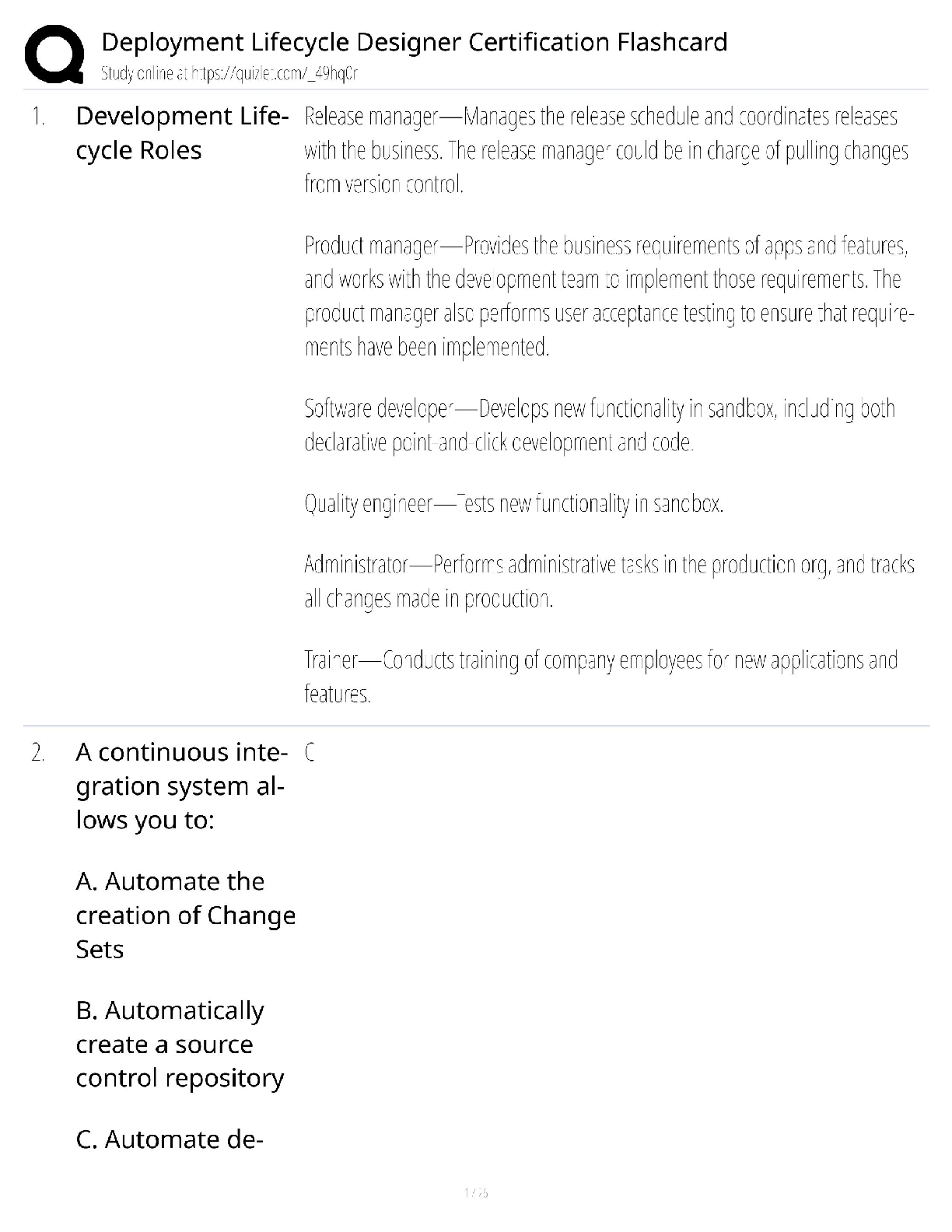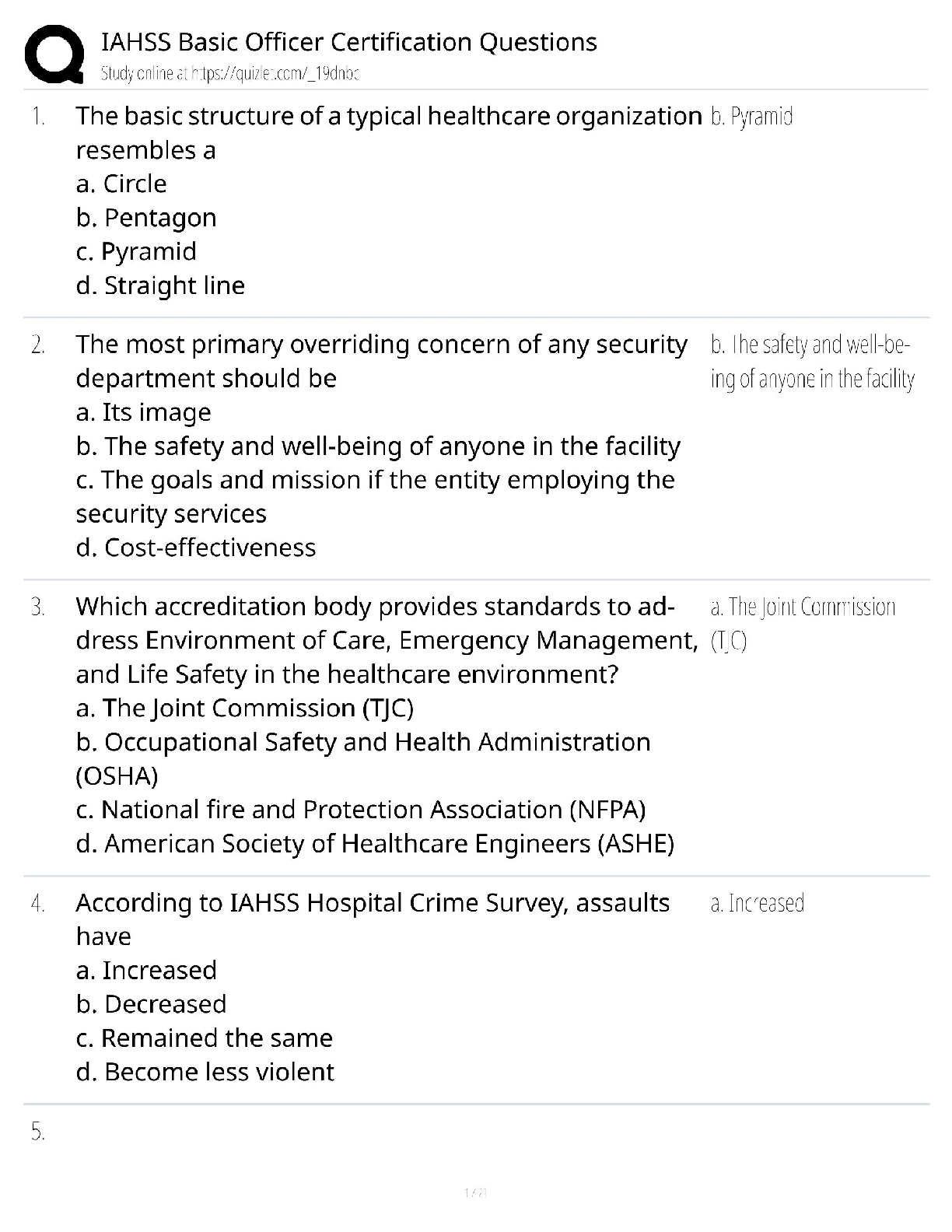Psychology > QUESTIONS & ANSWERS > PSYC 300 Midterm Exam - Week 4, Revised Complete Questions & Answers, Worth 180 Points. (All)
PSYC 300 Midterm Exam - Week 4, Revised Complete Questions & Answers, Worth 180 Points.
Document Content and Description Below
PSYC 300 Midterm Exam - Week 4 Part 1 of 1 - Question 1 of 24 Professor Adams is constructing a demographic questionnaire for use in a research project. One question asks s ... tudents to report whether they are currently living in an "urban", "suburban", or "rural" setting. This is an example of a/an: A. nominal scale B. ordinal scale C. interval scale D. ration scale Question 2 of 24 Which of the following represents a null hypothesis? A. Class A high school basketball teams who employ a sports psychologist will have a higher proportion of wins over the course of the season than comparable teams who do not employ a sports psychologist. B. There will be no difference in rate of skill improvement between college gymnasts who practice meditation and those who do not. C. Does incorporating relaxation exercises into the daily practice routine of college vocal majors enhance their performance confidence? D. None of the above Question 3 of 24 Which of the following represents a research hypothesis? A. Class A high school basketball teams who employ a sports psychologist will have a higher proportion of wins over the course of the season than comparable teams who do not employ a sports psychologist. B. There will be no difference in rate of skill improvement between college gymnasts who practice meditation and those who do not. C. Does incorporating relaxation exercises into the daily practice routine of college vocal majors enhance their performance confidence? D. None of the above Question 4 of 24 In a , each participant is tested under all conditions. A. carryover effect B. practice effect ! C. within-subjects experiment D. fatigue effect Question 5 of 24 The of psychology—the diagnosis and treatment of psychological problems—is one . A. clinical practice " B. treatment field C. addiction field D. mental health field Question 6 of 24 is written by a single author or a small group of authors and usually gives a coherent presentation of a topic much like an extended review article. Edited volumes have an editor or a small group of editors who recruit many authors to write separate chapters on different aspects of the same topic. A. A professional journal B. A scholarly book C. A monograph D. An edited volume Question 7 of 24 When considering general criteria for high-quality research projects, replicability refers to the fact that: A. the research design allows the researcher to control those factors that are central to the success of the project. B. another researcher, using the same procedures under the same circumstances to research the same question, would obtain comparable results. C. a well-designed research project could be carried out by a specific individual conducting research in the same field. D. the phenomena of interest must be quantified in some systematic way. Question 8 of 24 Charlotte, an anthropologist, has been living in an Incan village for three years. During that time Charlotte has become expert in Incan weaving by observing and imitating the master weavers in the community. For Charlotte, observing weaving constitutes: A. primary data B. secondary data C. informal data D. nonempirical data Question 9 of 24 Charlotte wrote a book about her experience as an anthropologist living in an Incan village for three years and becoming an expert weaver. Her book was widely read by other anthropologists, including Mira, who is an expert in Navaho weaving. For Mira, Charlotte’s book constitutes: A. hearsay data B. secondary data C. informal data D. primary data Question 10 of 24 Sean, a high school wrestler, has agreed to participate in a study of cardiovascular conditioning. He is left somewhat confused when, at the first research session, he is asked to complete a questionnaire about commonly purchased grocery items. Sean’s confusion indicates a lack of regarding the task. A. construct validity B. content validity C. criterion validity D. face validity Question 11 of 24 A researcher decides to use a high school sample to test the relationship between her new measure of empathy and a well-established measure of interpersonal sensitivity. She finds that the two instruments are highly related, which supports the of the new instrument. A. predictive validity B. content validity C. criterion validity D. face validity Question 12 of 24 A researcher designed a new questionnaire to measure political conservatism. To test out his new instrument, he asks people leaving their polling place on election day to report their degree of political conservatism on a scale of 1 (low) to 10 (high) and then complete his questionnaire. Results show that people who identified themselves as political conservatives also had the highest scores on his questionnaire. This is an indication of the of the new instrument. A. criterion validity B. content validity C. face validity D. predictive validity Question 13 of 24 Don and Jane are studying aggression among preschool children. Separately, they each watch a videotape of four children interacting in a playroom and then rate each child on the level of aggression displayed during the play session. They compare their completed ratings and are pleased to note they are highly similar. This is an example of reliability. ! A. interrater B. internal consistency C. equivalent form D. test-retest Question 14 of 24 Dr. Stevens is testing a 10-question measure of achievement motivation. He notes that if his respondents agree with the first question, they tend to also agree with the other nine. Likewise, if his respondents disagree with the first question, they tend of disagree with the other nine. This is an indication of good reliability. A. interrater B. internal consistency C. equivalent form D. test-retest Question 15 of 24 Professor Page is studying civic-mindedness among senior citizens. She administers a survey of civic mindedness to a senior citizens group in early April, then again in early May. By comparing the two sets of scores, the professor can assess the reliability of her measure of civic-mindedness. A. interrater B. internal consistency C. equivalent form D. test-retest Question 16 of 24 Dr. Davenport wants to conduct a study of whether high school students learn more efficiently while seated at a desk compared to in an easy chair. She knows there is a large research literature regarding similar influences on learning, and she wants to see if the findings hold true with a group of high school history students. Moreover, as a researcher she is uneasy with a lack of structure. You recommend that Dr. Davenport conduct a study. A. quantitative B. qualitative Question 17 of 24 Dr. Greenhill wants to know how it is that some early adolescents come to make a connection between their personal lifestyle and environmental problems, while others don’t. Furthermore, among those who see the connection, why do some become committed to environmentalism while others do not? Dr. Greenwald looks forward to probing the thoughts of young teens on these issues and trying to see the questions and issues through “14-year-old eyes.” You recommend that Dr. Greenhill conduct a study. A. quantitative B. qualitative Question 18 of 24 Scientific research is relevant to because it provides detailed and accurate knowledge about psychological problems and establishes whether treatments are effective. A. psychology B. addiction C. clinical practice D. professors Question 19 of 24 in psychology is conducted primarily for the sake of achieving a more detailed and accurate understanding of human behavior, without necessarily trying to address any particular practical problem. A. Statistical research B. Qualitative research C. Basic research D. Applied research Question 20 of 24 In research proposal(s), specific hypotheses regarding findings are often stated. A. both quantitative and qualitative B. neither quantitative and qualitative C. a quantitative D. a qualitative Question 21 of 24 Describe three benefits of conducting a thorough review of existing literature before writing a research proposal. Question 22 of 24 Concepts, ideas, opinions, feelings, and other intangible entities are often labeled as “insubstantial phenomena.” Select one of the following 3 phenomena that would be considered insubstantial, and explain two different ways — one qualitative and one quantitative — that you might measure it: a) the closeness of undergraduates’ social network friends; b) the “campus climate” at your university; c) “irrational exuberance” about the stock market. Question 23 of 24 In regard to quantitative research proposals, novice researchers often find it very challenging and tedious to explain in detail how the data will be analyzed and interpreted in their study. Explain why it is essential that the researcher not cut corners in this section of the proposal. Question 24 of 24 Graduate professors like to insist that the completion of thesis or dissertation research is not merely an “academic exercise” or final hurdle to obtaining the desired degree. Explain at least two personal benefits that the individual derives from completing a high- quality thesis or dissertation. Then explain at least two societal benefits that follow from the individual’s completion of a high-quality thesis or dissertation. [Show More]
Last updated: 3 years ago
Preview 1 out of 10 pages

Buy this document to get the full access instantly
Instant Download Access after purchase
Buy NowInstant download
We Accept:

Reviews( 0 )
$15.00
Can't find what you want? Try our AI powered Search
Document information
Connected school, study & course
About the document
Uploaded On
Apr 06, 2020
Number of pages
10
Written in
All
Additional information
This document has been written for:
Uploaded
Apr 06, 2020
Downloads
0
Views
252


